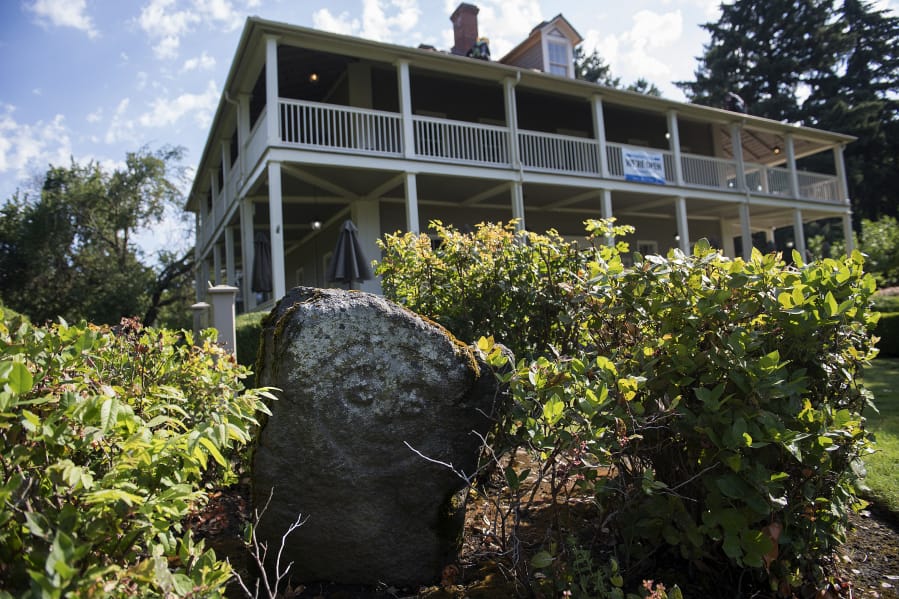Two petroglyphs that have sat for decades outside the historic Grant House near Fort Vancouver are being returned closer to their place of origin.
The petroglyphs, or carvings made by chiseling away a rock’s surface, are scheduled for transport to Columbia Hills Historical State Park in autumn. They currently sit — covered in lichen and surrounded by foliage — on the lawn in front of the Grant House Eatery, an unassuming display that belies their millennia-spanning history.
“They don’t belong to us. They belong to the tribes,” said Kerry Peck, a support specialist for Vancouver’s Art, Culture and Heritage Commission.
The works were originally carved by artists from the Native American tribes who lived by the Columbia River Gorge, in an area near what’s now The Dalles in Oregon.
The region, called Celilo Falls, was the oldest known continuously inhabited place on the entire continent of North America. It served as a cultural and economic gathering place for people from the Warm Springs, Yakama, Umatilla and Nez Perce tribes.
In the 1950s, the U.S. government announced funding for The Dalles Dam, which would ultimately inundate the site with slackwater and submerge generations of tribal art. An excavation effort led by the region’s tribes, in conjunction with the Oregon Museum of Science and Industry, recovered around 40 petroglyphs before the dam flooded the area in 1957.
Most of the recovered works are already gathered at Columbia Hills Historical State Park in a permanent outdoor display called Tamani Pesh-Wa, or “Written on the Rock.”
Weighing in at about 2 1/2 tons apiece, the two petroglyphs first came to Vancouver in 1957 as a donation from a local philanthropist, William Wineberg. According to a Columbian article published about the donation at the time, Wineberg was “one of the original patrons of Grant House and is himself a collector of aboriginal art.”
The article reports that the carvings on the boulders depict a head, but “the exact significance or interpretation of the carvings remains a mystery.”
The pieces are estimated to be up to 10,000 years old, the article reports. They came from Spedis Valley, just upstream of what would eventually be The Dalles Dam, and were excavated from the rock face by Vancouver sculptor James Hansen and his crew.
According to Liz Oliver, an archaeologist for the U.S. Army Corps of Engineers, representatives from the city and the Clark County Historical Society approached the Corps with a request to return the petroglyphs to their place of origin a few years ago.
The Columbia River Gorge Commission approved the project application on July 7. The two petroglyphs will join the other works on display as part of Tamani Pesh-Wa, along with a new 200-foot dry-stack wall to protect the installation.
“The plan is to remove them from the Grant House and place them at the Columbia Hills Historical State Park across from the current Tamani Pesh-Wa trail. Currently, we are on track to move the petroglyphs this year, likely in the fall. Eventually, there will be interpretive signage explaining their history and how they again came to be by the river,” Oliver wrote in an email.
“I’m happy to be able to inform you that the Grant House petroglyphs will return very close to their original home.”




